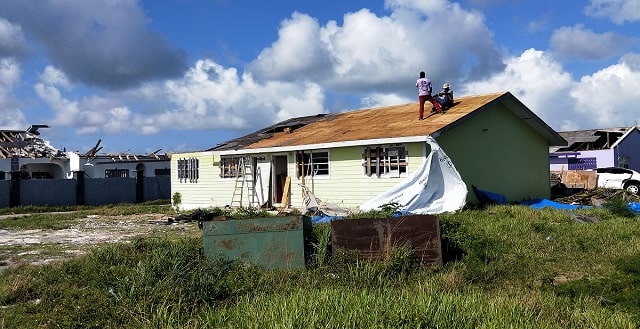In late August 2019, meteorological forces in the Atlantic Ocean conspired to spin out then called Tropical Storm Dorian and launch it, like an atmospheric bowling ball, at the Bahamas. When it made landfall on the Abaco Islands, on September 1, it had become a Category-5 hurricane with high speed winds. The results were catastrophic: at least 70 people died and almost half the homes on Abaco and Grand Bahama islands were severely damaged or destroyed.
With an estimated 70,000 people made homeless by the hurricane, the need for shelter was obvious. However, when Laxman Chhetry, Senior Shelter and Construction Advisor at the Canadian Red Cross, arrived in the Bahamas his work was initially more inward facing, providing technical support to the Bahamas Red Cross as they worked to repair their offices which were damaged by the hurricane. That changed when he visited Grand Bahama.
“I saw that contractors were being heavily used for the repair work and I thought that was the wrong direction,” Laxman says. “Each family gets only gets a certain amount of money. If you employ a contractor, they will get 20-30 per cent of that. So, the actual amount available to the family is reduced.”
Laxman couldn’t help but get involved. Based on past experiences, he suggested switching to a different approach where the homeowner was in control and received money based on how much work they did to rebuild.
 Homeowners in the Bahamas work to repair their roof, with support from the Red Cross, following Hurricane Dorian
Homeowners in the Bahamas work to repair their roof, with support from the Red Cross, following Hurricane Dorian
“The biggest disadvantage with contractors is that the family doesn’t get any choice in how their home is rebuilt,” Laxman says. “With the owner-driven method, because the owner can do the work themself, they can use salvaged materials, and they can choose whether to use more or less costly materials.”
He had learned from his work supporting the rebuilding efforts after the 2015 earthquake in Nepal that while training homeowners extensively on construction skills was essential, many people already knew enough to get to work.
“We realized that a lot of people already had carpentry skills and houses are mostly timber so not a lot of masonry skill was needed,” Laxman says. “So, people either already had these skills or someone else that they knew in the community was able to help.”
Homeowners are understandably the most motivated to complete their house repairs or reconstruction and because of this, the work is often completed much faster as well. They also frequently report a much greater sense of empowerment and ownership after doing the work themselves to make their home livable again. However, they are not left to do it alone. Throughout the process the Red Cross visits homes to ensure that any work done is safe and to code.
“There were also a lot of savings in overhead costs with the owner driven approach,” Laxman says. “We were able to provide grants to an additional 70 households as well as help 13 families make their homes more accessible to people with a disability.”
When COVID-19 eventually reached the islands, homeowners were able to keep working on their homes because they weren’t as reliant on outside support. Ultimately through hard work and support from the Red Cross 570 of the most vulnerable families whose homes were in the path of the hurricane now have roofs over their heads again.
“This was possible because of savings on overhead costs and the timely completion of shelters,” Laxman says. “When you go and ask people what it means to them to be able to rebuild their own home, they are really grateful. They will make you cry.”
Many of the people who lost their homes to Hurricane Dorian have been able to rebuild, and life has more or less returned to normal. Yet, every year as the steamy Caribbean summer months approach there is a palpable sense of dread. Winds over the Atlantic begin to blow moisture-laden air up into the lower atmosphere where it cools, condensing into powerful storms, and — with strong enough winds — a hurricane.
But this does not need to produce a relentless cycle of destruction. As homes are rebuilt, they can be made stronger, more resistant to the violent forces of nature. Work can be done to better prepare communities for the impacts of a disaster; innovative funding mechanisms like the International Federation of Red Cross Red Crescent Forecast-based Action can help National Societies act before a disaster strikes, and homeowners can be equipped with the knowledge and confidence to know that they can rebuild, that they will rebuild.
Learn more about the IFRC Forecast-based Action.
Related:

